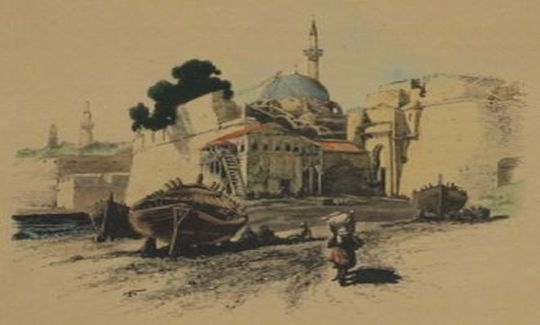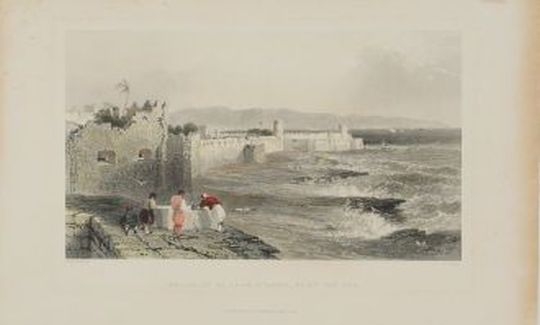Akko in the Printmaker's Art -
17th - 19th Centuries
Saturday, 27.04.13
Sunday, 29.09.13
:
Avshalom Zemer
More info:
04-6030800The location of Akko was most attractive to the ruling powers in Palestine. It lies at a crossing of the ways - one along the shores of the Mediterranean and the other the route from Syria and Transjordan to the coast. Akko was one of the few coastal cities with a natural bay. It is first mentioned in Egyptian documents from the 2nd millennium BCE, after which the name appears in Akkadian and Ugarit texts, in the classical, Arabian and the Crusader sources. In the Bible, Akko is referred to in Judges I, 31: "Neither did Asher drive out the inhabitants of Accho.....".
Throughout history, the face of Akko has changed, and the city has known periods of growth and prosperity, ruin and destruction. It was at the height of its ascendancy as the capital city of the Crusader kingdom of Jerusalem in the 13th century. In 1291 Akko was conquered by the Mameluke sultan Al-Ashraf Khalil, and his armies pillaged the city and massacred its inhabitants. Akko became a small settlement of some 500 souls, and during the Mameluke era (1291-1516) was no longer a focal trading city as in the past.
In the 16th century, the Ottoman Empire (1516-1917) was at the height of its power, and this was also the only period during the Ottoman rule of Palestine of peace and security. The stable economy and security of Akko was largely due to the port, for export to the West of cotton from the surrounding villages. In the 18th century Akko was the capital of Galilee, its importance even greater than that of Sidon, capital of its own province. In 1746-1775, Daher al-Omar, of the Beduin Zaidan tribe which owned much land in Galilee, became governor. During his term of office, the harbour at Akko became the main port of Palestine. The city walls and the caravanserai (khans) were repaired. A quay and storage spaces were constructed in the harbour.
In 1775-1804 Ahmad al-Jazzar replaced Al-Omar as governor and commissioner of Sidon, and Akko became the official capital. Al-Jazzar rehabilitated and extended the town, built flour mills and a new aqueduct to convey water from the springs at Cabri, as well as the mosque that bears his name.
From the month of March until May 1799, Napoleon Buonaparte laid siege to Akko, with the intention of possessing it as a basis for arousing opposition to Ottoman rule in Syria. He placed his cannon on Tel Akko, which has since been known as "Napoleon's Hill". Ultimately, he abandoned this project and handed the city over to the Turks, with the assistance of British seamen under the command of Admiral Sir Sidney Smith, the French diplomat Antoine de Philippe, Al-Jazzar's adjutant Suleiman Pasha, and his Jewish advisor Haim Pharchi (1760-1820).
In 1805-1818 Suleiman Pasha governed the city. Secretly, he was Al-Jazzar's man. He repaired the city's fortifications and initiated building works, including the "White Souq" (market), storage for imports, and repairs to the aqueduct. After his death he was replaced by Abdallah Pasha (1818-1831).
In 1832 Akko was conquered by Egyptian forces, and in 1840, after a siege imposed by the allies of the Ottoman Empire - England and Austria - the city came under Ottoman rule.
During periods of political instability in the 18th and 19th centuries, the government of Akko passed from hand to hand. Voyagers complained that the anchorage at Akko was inconvenient due to lack of facilities. The port was mainly suitable for small boats or vessels with a low draft that plied the coasts of Palestine for trade. There was information about those that preferred to anchor at Haifa and convey their cargoes overland to Akko, but it was only in the latter half of the 19th century that Haifa and its port actually replaced Akko.
Palestine, the Holy Land and its virgin scenery attracted tourists and pilgrims in the 19th century, a period in which, in Europe, interest and research into aspects of the region increased. Westerners travelled to distant parts of the country, areas that had not been visited for centuries - the deserts of the Negev, Sinai and Transjordan all contributing to a wealth of depictions that attracted even more visitors.
As an ancient walled city, with its port, market and historic sites, Akko has aroused the imagination of artists and illustrators in the past and in the present. The exhibition includes maps and prints of views and scenes of the city. By means of these "accounts" the visitor can see and experience something of the atmosphere that reigned in Akko in the past. The prints are in a variety of techniques - lithography, steel engraving, copper etching, woodcuts, stipple engraving, woodblock print and aquatint.


